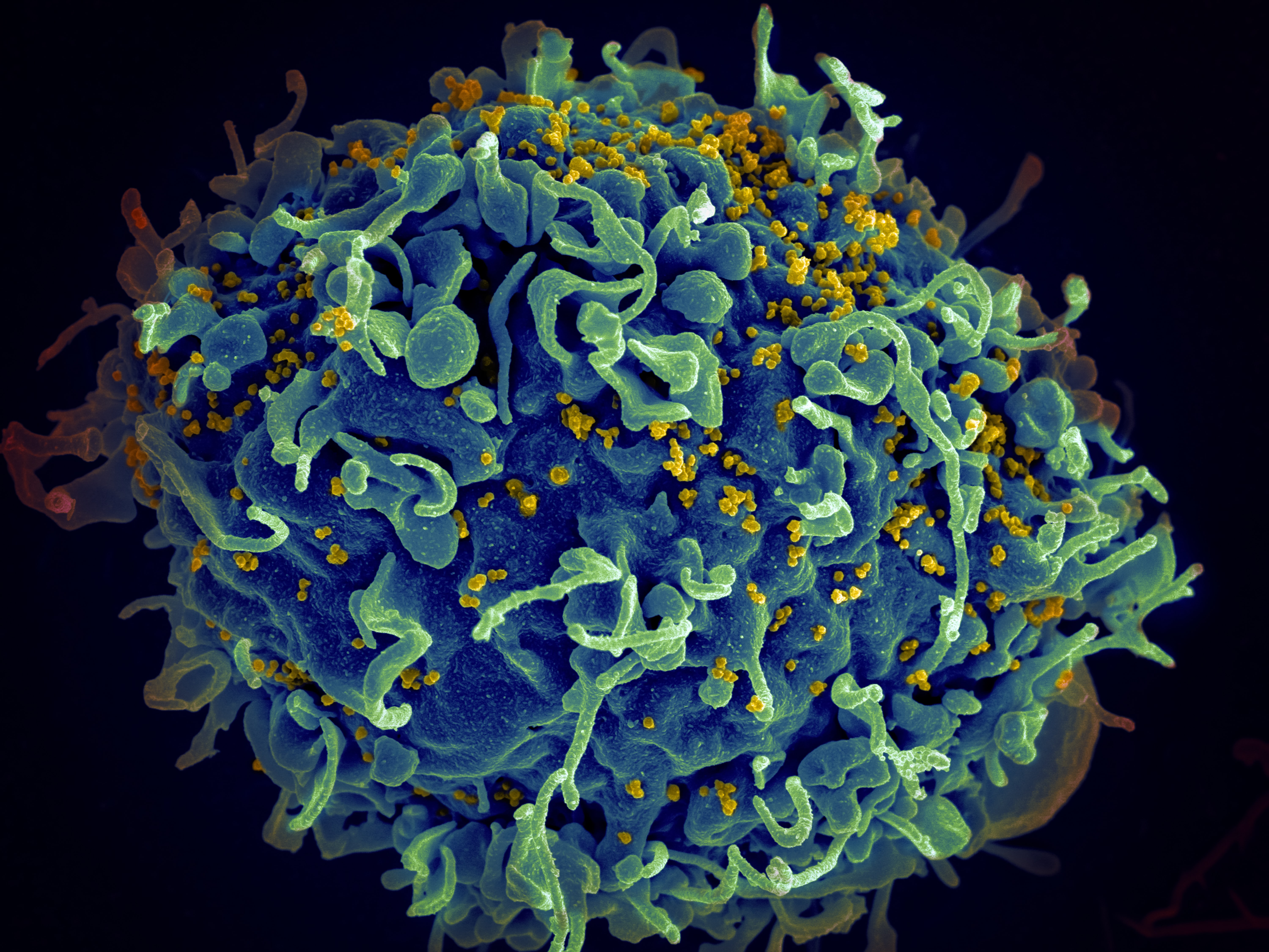A technique developed in collaboration with George Washington University researchers is a key procedure to the first in human HIV vaccine trials, enabling a novel vaccination strategy that is already showing promise. GW’s Vaccine Research Unit (VRU), in partnership with Scripps Research, IAVI, Fred Hutchinson Cancer Center (FHCC) and the National Institutes of Health, National Institute of Allergy and Infectious Diseases Vaccine Research Center, published the promising results of their Phase I clinical trial in Science this month.
An HIV vaccine is a holy grail for current medical science in part because its development has proved so elusive: The virus mutates and multiplies so quickly that it outpaces most immune responses. But the strategy tested in this trial will mimic the multi-stage natural response of that minute percentage of people—also known as “elite responders”—whose immune systems can successfully prevent HIV infection.
David Diemert, clinical director of the VRU and professor of medicine at the School of Medicine and Health Sciences, suggested visualizing the process as a kind of decision tree or maze wherein almost all paths lead to infection. The immune system kicks in as soon as it detects the virus, but in almost all humans, HIV mutates almost immediately and thereby eludes capture.
“What happens is this cat and mouse game where eventually the virus does escape from the maze, because it keeps on changing and the person infected never catches up,” Diemert said. “That’s what happens in 99.9% of people.”
But in the rare cases of elite responders, the sequence of moves and countermoves, mutations and responses, results in the production of broadly neutralizing antibodies, or “bnAbs.” These are rare antibodies capable of targeting a wide range of viruses including multiple HIV variants. In the language of the maze, bnAbs back the virus into a dead end where it can be destroyed.
To replicate this process in a broader population, researchers reverse-engineered the series of steps occurring in elite responders—working backward to model the original mutational events.
“With this particular vaccine, the concept is to give people vaccines that will induce these antibodies which occur very rarely in nature and can only be produced by people who have gone through this series of mutational events,” Diemert said.
This study, known as IAVI G001, uses a procedure known as “germline targeting” to eventually produce bnAbs that can protect against HIV. In this first stage, researchers designed a customized molecule or immunogen that will “prime” the immune system, stimulating a response from the rare immune cells—known as bnAb-precursor B cells—that can evolve into the cells that produce bnAbs. Trial results showed that the vaccine had a favorable safety profile and induced the targeted response in 97% of people who were vaccinated.
It’s a crucial first step toward the eventual development of a vaccine—the first turn in that maze-path that leads eventually to the cornered virus. “It’s like we got a spark from our key in the ignition,” Diemert said.
The clinical trial also uses a novel method of sampling developed by the clinical and biorepository teams at GW, FHCC and IAVI to access the bnAb-precursor B cells, which are sequestered in the lymph nodes. A fine needle guided by ultrasound is used to aspirate draining lymph nodes on the side of the vaccine injection site, drawing out cells directly from tissue—as opposed to most vaccine trial sampling, which traditionally uses cells from venous blood.
“This is the first time such a technique has been used routinely in a vaccine clinical trial,” said Jeffrey Bethony, laboratory director of the VRU and professor of microbiology, immunology and tropical medicine at SMHS. “It enabled us to acquire a cell population critical to germline stimulation that do not circulate but remains sequestered in lymph node tissue.”
“There’s lots of really important diseases that need a vaccine, but for researchers who design vaccines, HIV is very elusive,” Bethony said. “We think that we now have a completely new take on how to go after it—and that gives us a whole new avenue to explore for vaccine design.”
The GW VRU has partnered with IAVI on two other HIV vaccine-related Phase I clinical trials over the past five years, serving as a lead site, central biorepository and support unit. In addition, the unit has conducted a number of other clinical vaccine trials to date, including a Phase III trial to test the now FDA-approved COVID-19 vaccine from biotechnology company Moderna; a Phase II clinical trial for a COVID-19 vaccine booster from the biopharmaceutical company Sanofi; and a Phase I trial of a vaccine to prevent Lassa fever, an acute, animal-borne viral disease endemic to parts of West Africa.



